The Early Schools of Indian Buddhism Series
How the Theravada school dealt with doctrinal points from other schools
The Katha-vatthu — Chapter 3 — Part 12
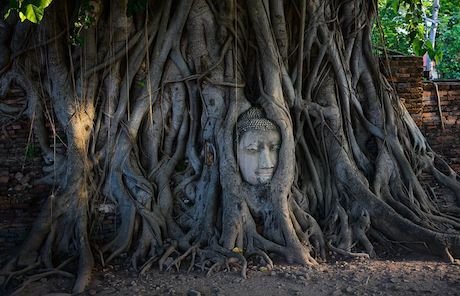
In Part 8 of this series, we looked at the schools that ‘participated’ and ‘did not participate’ in the Third Council of Buddhism, according to the Kathavatthu, the text that deals with the ‘points of controversy’ from schools other than Theravada. As was mentioned in Part 8, the Kathavatthu is classified as a canonical text in the Theravada tradition, as being part of the Abhidhamma Pitaka, although the text has been expanded up until the second century AD, as evidenced by the ‘late’ schools that are mentioned in the text. Likely, the text started out small and was expanded as more controversial viewpoints from other schools were encountered and dealt with as such.
The Kathavatthu includes a total of 217 points of controversy, divided into twenty-three chapters, where each point is associated with one or more schools, although a few are not assigned to any particular school at all. Due to the vast amount of doctrinal points covered, I have divided this Part 12 of the series into seven chapters, with each chapter covering one or more of the schools and their doctrinal points of ‘controversy.’
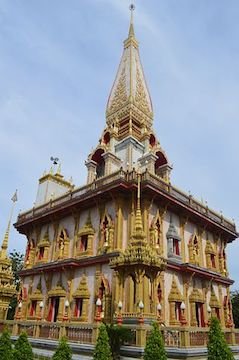
The total number of points of ‘controversy’ for each school covered in this chapter:
Andhakas (Pubbaseliyas, Aparaseliyas, Rajagirikas, Siddhatthikas): 73
Note that the Andhakas school is a grouping together of four schools, meaning that those 73 points were held by all four schools.
Overview of the chapters that cover the various schools:
- Chapter 1 — Vajjiputtakas, Sammitiyas, Sabbatthivadins
- Chapter 2 — Kassapikas, Mahasanghikas
- Chapter 3 — Andhakas
- Chapter 4 — Pubbaseliyas
- Chapter 5 — Aparaseliyas, Rajagirikas, Siddhatthikas, Gokulikas, Bhadrayanikas, Mahimsasakas
- Chapter 6 — Uttarapathakas
- Chapter 7 — Hetuvadins, Vetulyakas, Not assigned to any school, No points assigned
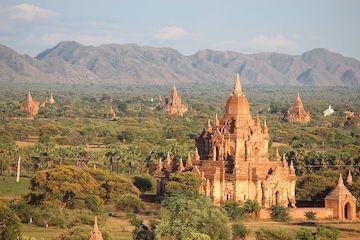
In this post we’ll be looking at the schools for Chapter 3 — Andhakas
The given name for the schools in this post follow the Theravada name designation as mentioned in the Kathavatthu text, followed by the Sarvastivada name designation by Vasumitra in his Samaya-bhedoparacanacakra text. The Kathavatthu is divided into twenty-three chapters. Each point of controversy’s headline listed here starts out with the Kathavatthu reference of book (in Roman numerals) and point, i.e., IX. 4 means book nine, point four.
Section 1 — Andhakas [grouping together of: Pubbaseliyas, Aparaseliyas, Rajagirikas, Siddhatthikas] (73 points of controversy)
A distinguished group of monks that seceded from the Theravada. They included as minor sects Pubbaseliyas, Aparaseliyas, Rajagirikas, and Siddhatthikas. They were still dominant in Buddhaghosa’s time. The Andhakas are not mentioned as a particular school either in the Mahavamsa or the Dipavamsa, although the Mahavamsa mentions the four schools as offshoots of the Andhakas. This is a group of four schools together, and all four schools adhered to these seventy-three points of controversy.
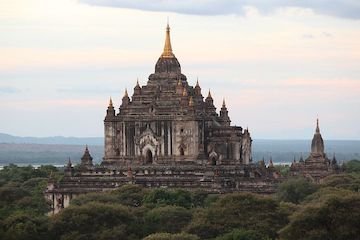
Point 1 — I. 9. Of Applications in Mindfulness
That all mental states are applications in mindfulness.
The groups holding unique views which arose later, to wit, the Andhakas, comprising the sub-groups of the Pubbaseliyas, Aparaseliyas, Rajagirikas, and Siddhatthikas, held the opinion that the objects of mindfulness, namely, the body and the rest, were themselves (the conscious subject) mindfulness. This they deduced from the passage in the ‘satipatthana-samyutta’ (SN.i.184): ‘I will show you, monks, the induction and the cessation of applications in mindfulness.’ (SN v.184) To break down this opinion, the Theravadin puts the question.
SN v.184: The controversy turns upon the double sense, subjective and objective, of the term sati-patthana, or mindfulness-applications. The Opponent confuses the objects of this essential four-fold religious exercise with the mental exercise itself, thus merging object in subject, ‘subject’ in Buddhism being ‘consciousness of an object.’ We have much the same ambiguity observed in the popular use of object and subject of thought. Etymologically ob- and sub- scarcely support the distinction prescribed by philosophy. A ‘subject for meditation’ is an ‘object of thought.’ A ‘hypnotic subject’ is for the hypnotizer an object. The Sutta on which the opinion is based is ambiguously worded in the context that follows. This gives not the induction and cessation of the meditating ‘mindfulness,’ but the cause or genesis (samudayo can mean these or induction) of the four prescribed objects of the meditation—the body, feelings, consciousness, and cognizable objects—the causes being nourishment, contact, mind-and-body, attention, respectively.
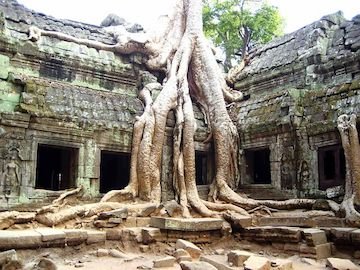
Point 2 — I. 10. Of Existence in Immutable Modes
That things exist so and not otherwise.
This is an opinion now held by the Andhakas and others, such as the Pubbaseliyas, etc., named above. They declare that all things exist, in time, by way of material and other qualities, as past, present, or future, but that there is no past that is at once future and present, nor any future and present that are also past, and therefore all exists only as thus (a), and not as thus (b). Then, says the Theravadin, the past both is and is not.
Point 3 — II. 7. Of the Duration of Consciousness
That a single (unit of) consciousness lasts for a day.
The Theravadin puts this question to correct the belief of the Andhakas, whose secession is narrated above, that, judging by the apparent continuity both of consciousness in Jhana and of sub-consciousness, a single state of consciousness lasted for a length of time.

Point 4 — II. 9. Of a Specified Progress in Penetration
That penetration is acquired in segmentary order.
By thoughtlessly considering such Suttas as—‘Little by little, one by one, as pass. The moments, gradually let the wise,’ etc., (Sutta Nipata verse 962), the Andhakas, Sabbatthivadins, Sammitiyas, and Bhadrayanikas have acquired the opinion that, in realizing the Four Paths, the corruptions were put away by so many slices as each of the Four Truths was intuited.
Point 5 — II. 10. Of a Buddha’s Every-day Usage
That the Exalted Buddha’s ordinary (every day) speech (voharo) was supra-mundane (Lokuttara, a broad term meaning all unworldly thought and ideals, and including supernormal powers of mind when occupied with such ideals only. Jhana, e.g., may be lokiya, mundane. The Opponent over-emphasizes the supernormal side of it.).

The Andhakas hold that his daily usages were supra-mundane usages.
Point 6 — II. 11. Of Cessation
That there are two cessations (of sorrow).
The Mahimsasakas and the Andhakas believe that the Third Truth (as to the cessation of suffering), though constructed as one, relates to two cessations, according to as sorrow ceases through reasoned or unreasoned reflections about things.
Point 7 — III. 1. Of Powers
That the powers of the Buddha are common to disciples.
This is an opinion among the Andhakas, derived from a thoughtless consideration of the ten Suttas in the Anuruddha Samyutta, (SN v.304 f., suttas 15-24) beginning: ‘I, monka, from practice and development of the Four Applications of Mindfulness, understand even as it really is the causal occasion (thanam thanato) as such, and what is not the causal occasion,’ etc. Now of a Tathagata’s ‘ten powers,’ some he holds wholly in common with his disciples, some not, and some are partly common to both. All can share insight into the extinction of intoxicants (asava); he alone discerns the degrees of development in the controlling powers (Indrayani). The causal occasion of anything, as well as seven other matters, a Tathagata, knows without limit, the disciple knows them only within a specific range. The latter can state them; the former can explain them. However, the Andhakas say that the whole of his power was held in common with his (leading) disciples.

Point 8 — III. 2. Of the Quality called ‘Ariyan’
(a) That the power of a Tathagata, e.g., in discerning as it is the causal occasion of anything, and its contradictory, is Ariyan.
That, of the foregoing ten powers of discernment or insight, not only the last (insight into the extinction of intoxicants) but also the preceding nine were Ariyan, is a view of the Andhakas.
Point 9 — III. 3. Of Emancipation
That ‘becoming emancipated’ has reference to the heart being (at the time) in touch with lust, etc.
Whereas it is true that, in minds or hearts devoid of e.g. lust, there is no need to get emancipated, the opinion held at present by such as the Andhakas is that, just as a soiled garment is released from its stains on being washed, so emancipation means that a heart beset with lust is emancipated from lust.
In other words, the climax and crown of Path-graduation are degraded to denote progress in the early stages. Emancipation is technically applied to release from rebirth, through release from the conditions thereof. Nibbana is the extinction of lust, hate, and nescience or delusion. Emancipation is the state of purity after the purging was done. The opponent holds the serious errors that the Arahant still has lust, etc., to get rid of, and that a preceding unit of consciousness is virtually identical with the succeeding unit.
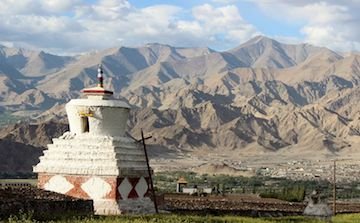
Point 10 — III. 5. Of the Eighth Man (note 1)
That for the person in the Eighth Stage, outbursts of wrong views and doubt are put away.
Here the question is raised concerning a particular view of both Andhakas and Sammitiyas, namely, that, at the moment of entering on the Path, after qualification and adoption, two of the (ten) corruptions no longer break out in the eighth man—that is, the person who has entered on the stream.
Note 1: Atthama-ko, literally Eighth-er. Of the Four Paths and Four Fruits, this is the lowest, the first reached, or eighth from Arahantship. The correct view was that the victories alluded to belonged only to the next stage—to the ‘moment’ of fruition—making the subject a genuine ‘Stream Winner.’
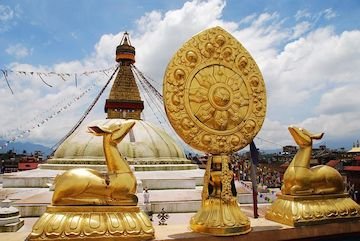
Point 11 — III. 6. Of the Controlling Powers (the five spiritual powers) of the Eighth Man
That the five controlling powers are absent (not yet developed) in a person of the Eighth Stage.
Among the Andhakas it is held that, at the moment of entering the (first stage of the) Path, the ‘Eighth Man’ is in the process of acquiring, but has not yet attained to, these powers.
The five spiritual (or moral) sense-faculties are faith, energy, mindfulness, concentration, reason, or understanding.
Point 12 — III. 7. Of the ‘Celestial Eye’ (The power of apprehending, as visualized, things not accessible to the sense of sight.)
That the fleshly eye, when it is the medium of an idea, becomes the celestial eye.
This is a view held by the Andhakas and Sammitiyas.
The view, held at present by such as the Andhakas and Sammitiyas, is that the human eye when it is the ‘medium’ (or basis) of things (dhamm’upatthaddam) in Fourth Jhana, becomes the deva-eye. Regarding them, the Sakavadin asks: “Is the fleshly eye?” etc. The opponent assents. Again, being asked: “Is the fleshly eye the deva-eye, and conversely?” he rejects, because he thinks, it is only like that, is not that.
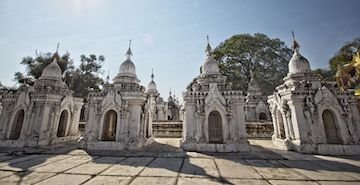
Point 13 — III. 8. Of the Celestial Ear
That the fleshly ear, when it is the medium of an idea, is the celestial ear.
This is similar to point 12, and the most probable adherents are the Andhakas and Sammitiyas.
Point 14 — III. 11. Of Unconscious Life
That there is consciousness among the denizens of the sphere called Unconscious (sphere in the mid-heavens called Rupa-loka, the form realm).
This belief is of the Andhakas, derived partly from the Word: ‘mind (at rebirth) is conditioned by previous actions,’ (SN ii.2) so that, in their view, there is no living rebirth without mind, partly from this other Word: ‘those devas decease from that group as soon as consciousness arises in them.’ (DN iii.33) They concede consciousness to those devas of the unconscious sphere at the moment of rebirth and of decease.
For the reference to DN iii.33: Here ‘Mind’ (vinnana) and consciousness (sanna) are being used in a synonymous and general sense.
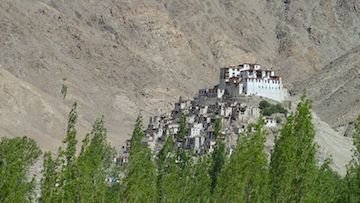
Point 15 — III. 12. Of the plane wherein Consciousness neither is nor is not
That it is wrong to say that, in the plane wherein consciousness neither is nor is not, there is consciousness.
This inquiry was directed against those who, like the Andhakas of our time, hold that, from the Word:—the sphere of neither consciousness nor unconsciousness,’—it is not right to say that in that realm of life there is consciousness.
Point 16 — IV. 8. Of entering on the Path of Assurance
That the Bodhisat (aspiring Buddha) had entered on the Path of Assurance and conformed to the life therein during the dispensation (pavacana, the teaching of the doctrine) of Kassapa Buddha (the previous Buddha before Gotama).
This discourse deals with a belief, shared by the Andhakas, concerning the account in the Ghatikara Sutta of Jotipala joining the Order, (MN ii.46) that our Bodhisat had entered the Path of Assurance under Kassapa Buddha. Now Assurance (niyama) and the ‘higher life therein’ (brahmacariya) are equivalents for the Ariyan (Four-fold) Path. Moreover, there is no other entering upon that Path for Bodhisats save when they are fulfilling the Perfections; otherwise, our Bodhisat would have been a disciple when Stream-Winner, etc. The Buddhas prophesy ‘he will become a Buddha’ (as Kassapa is said to have prophesied concerning Gotama Buddha, then alive as this Jotipala) solely by the might of their insight.
For the reference to MN ii.46: Jotipala was a young Brahmin, who, against his will, was brought by Ghatikara, the potter, to hear Kassapa Buddha, and became a monk. Gotama Buddha affirmed that Jotipala was a former impersonation of himself.
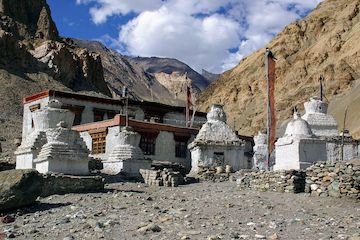
Point 17 — IV. 9. More about Endowment
That a person who is practicing in order to realize Arahantship possesses, as a persistent distinct endowment, the preceding three fruitions.
This discourse deals with the belief, shared by the Andhakas, that a person described holds the three Fruitions as an acquired quality (patta-dhamma-vasena). It is to be understood as like that on ‘the four Fruits.’
Point 18 — IV. 10. Of putting off the Fetters
That the putting off of all the Fetters is Arahantship.
This is an opinion of the Andhakas—namely, that Arahantship means the (simultaneous), unlimited putting off of all the fetters. These fetters were ten vicious states or qualities, to be put away gradually by progress in the ‘four paths,’ and not all at once.
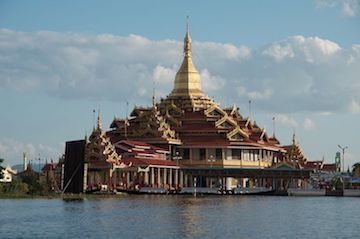
Point 19 — V. 1. Of Emancipation
That the knowledge of emancipation has itself the quality of emancipation.
Four sorts of knowledge (or insight, nana) are grouped under the knowledge of emancipation, to wit, insight or intuition, path-knowledge, fruit-knowledge, reflective knowledge. In other words, emancipation considered as:
- 1. Freedom from perceiving things as permanent or persisting, or through perceiving the opposite.
- 2. The severance and renunciation effected by the Paths.
- 3. The peace of fruition (phalam patipassaddhi-vimutti)
- 4. Contemplation of emancipation as such.
Now only the peace of fruition is abstract, unqualified emancipation. The rest cannot be called emancipated things. However, the Andhakas say that all four are such.
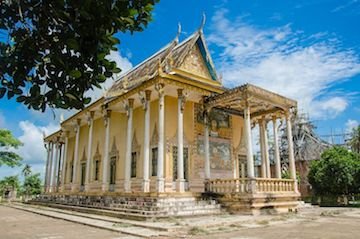
Point 20 — V. 3. Of Perverted Perception or Hallucination (in Jhana)
That in one who has attained Jhana through the earth-meditation-object (kasina), etc., knowledge (of what is seen) is perverted.
It is a belief among the Andhakas, that when anyone has induced Jhana by the (self-hypnotizing) process of gazing on (a portion of) earth and being conscious of earth, the content of consciousness becoming other than earth (though his gaze is still fixed thereon), his cognition may be called perverted, seeing one thing, namely, the physical earth, and being conscious of something else, to wit, the percept, or concept. The opponent’s position is that the subject is conscious of an idea, which is never the original object, the mind being referred to that by process of hallucination.
The Theravadin’s position is the specialization of the meaning of ‘earth.’ It may mean the ultimate quality of extension, physical (literally, structural) earth, a percept or concept, a (nature-)deva. The only real perversion of cognition is to see permanence, persistence in the impermanent. There is no hallucination or illusion, etc., properly so called, in Jhana. Because, when the subject is conscious of the percept or concept of earth, the content of his consciousness is just that percept or concept.

Point 21 — V. 5. Of Analytic Insight (patisambhida, or analysis; literally, ‘resolving, continued breaking-up.’)
That all knowledge is analytic.
The Andhakas believe that in an Ariyan (that is, one who has ‘made sure,’ is in some Stage of the Path or Way) all ‘knowledge’ whatsoever is supramundane or transcendental. Hence they conclude that it is also analytic.
Point 22 — V. 6. Of Popular Knowledge
That it is wrong to say: Popular knowledge has only truth as its object and nothing else.
This discourse is to purge the incorrect tenet held by the Andhakas, that the word ‘truth’ is to be applied without any distinction being drawn between popular and philosophical truth. Truth in the highest or ultimate sense.
Point 23 — V. 7. Of the Mental Object in Telepathy
That insight into the thoughts of another has no object beyond bare other-consciousness as such.
Some, like the Andhakas at present, have held this view, deriving it from just the technical expression ‘insight into a limited portion of the consciousness of another.’ However, this is untenable, since in knowing consciousness as lustful and so on, the object becomes fundamentally complex.
The dispute is really on the meaning or context of the term citta: the bare fact of consciousness, or the concrete, complex psychic unit as understood in European psychology.
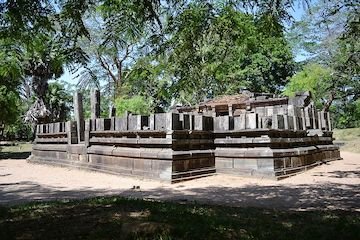
Point 24 — V. 8. Of Insight into the Future
That there is knowledge of the future.
The future includes both what will happen proximately and what is not just proximate. Concerning the former, there is entirely no knowledge, any more than there is of what is included in a single track or moment of cognition. However, some, like the Andhakas, incline to a belief that knowledge concerning any part of the future is possible.
Point 25 — V. 9. Of Knowledge of the Present
That the present may be known.
Because of the Word: When all phenomena are seen to be impermanent, the insight itself, as a phenomenon, is also seen to be impermanent, some, as the Andhakas, have the opinion that there is knowledge of the entire present, without distinction. Now if there be such knowledge, it (as a present) must take place at the present instant through itself. However, because two knowledges cannot be simultaneous in the one self-conscious subject, knowledge of the present cannot be known by the same act of knowledge. A self-consciousness is indeed an act of retrospection, and its object is not present, but past.
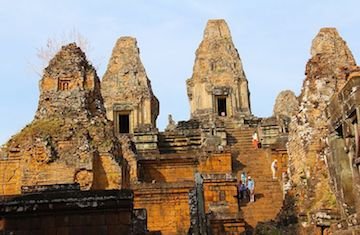
Point 26 — V. 10. Of Knowing Others’ Fruition
That a disciple can have knowledge concerning fruition.
Some, like the Andhakas, have held that, since it was said that both the Buddhas and their disciples teach beings the doctrine of the attainment of Ariyan fruition, disciples can, like the Buddhas, state that this or that being has won some Fruit. Now if that were so, they could also, by their insight, give details concerning that attainment. However, they cannot.
Point 27 — VI. 1. Of Assurance (niyamo, certainty) of Salvation
That ‘Assurance’ is unconditioned.
In the text: ‘Capable of entering into Assurance, the culmination in things that are good,’ (AN i.122, SN iii.225) the Ariyan Path is meant. However, since a person therein would not forfeit salvation even if that Path which (for him) had arisen were to pass away, therefore there is an opinion, among Andhakas for instance, that this Assurance is unconditioned in the sense of being eternal (nicca, permanent).
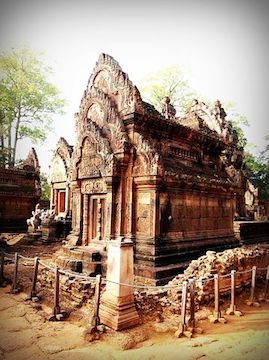
Point 28 — VI. 5. Of the Attaining to Cessation (Jhana)
That the attainment of Cessation is unconditioned.
By the attainment of Cessation is here meant the suspension of conscious procedure in Jhana. As something done., attained, it is called ‘completed,’ but it cannot be spoken of as conditioned or unconditioned since the features of one state or the other are absent. However, some, as the Andhakas and Uttarapathakas, hold that, because it is not conditioned, it is therefore unconditioned.
Point 29 — VI. 7. Of Space as Visible
That space is visible.
This is the view, among the Andhakas for instance, namely, that because we have cognition of enclosed space, such as keyholes, etc., therefore all void space is visible. They argue that in that case space is rupa (of form), that is, visible material object. In the absence of a Sutta authorizing this, the opponent rejects it, yet insists on the testimony of pillar-interstices, etc., as visible things. In such cases, however, what is seen are the pillars, trees, and so forth. That what lies between is space, there being no visible objects, is an act of ideation, not of sense-cognition. This applies throughout; hence the opponent's argument is not conclusive.
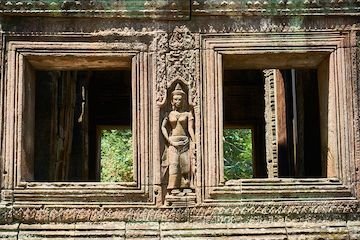
Point 30 — VI. 8. Of the Four Elements, Five Senses, Action, as Being Visible
That each of these is visible.
This opinion is also maintained by such as the Andhakas, from the fact that we ‘see’ oscillations in stones, water, flames, trees, as well as colors of sentient surfaces and the shapes of hands, feet, etc., on occasion of bodily intimations.
The four ‘elements’ were not the material compounds, earthy, etc., but the general abstract qualities distinguishing the four groups so-called. Indriya is the controlling power or faculty exercised in a sense. Kamma is the notion of ‘action’ in overt physical movements. All that we see are changing colored surfaces.
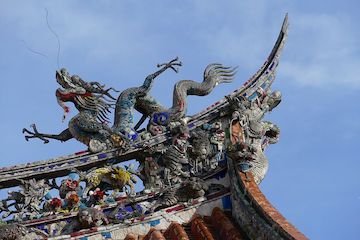
Point 31 — VII. 7. Of the Earth and Karma
That land is a result of action.
Since there is human action directed to gain dominion and sovereignty over the soil, some, like the Andhakas, hold that the earth itself is a result of such action (or karma). The argument goes to show that (1) land has nothing in common with the sentient results which are caused by karma; (2) that such results are a matter of individual subjective experience, not shared by others, myriads of whom do not even live upon the earth.
Point 32 — VII. 8. Of Decay and Death and Karma
That old age and death are a result of action.
Since some action does conduce to that deterioration we call decay or old age, and to that curtailing of life we call death, some, like the Andhakas, hold that old age and death are the ‘result (vipaka)’ of that action. Now there is between morally bad action and material decay the relation known as karma, (kamma and vipaka (result in sentience) are two of the twenty-four paccayas or correlations of things physical or mental.) but the moral cause and the physical effect differ in kind. Hence the latter is not a subjective result (vipaka). It is unlike any mental state:—contact, feeling, etc.—such as is produced by karma. Besides, it is partly due to the physical order (utu).
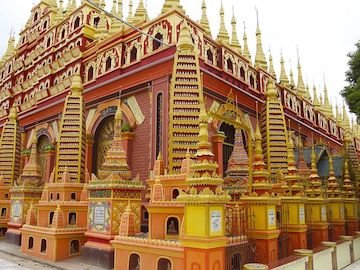
Point 33 — VII. 9. Of the Ariyan Mind and its Results
That Ariyan states of mind have no positive result.
Some, like the Andhakas, hold that the fruits of religious life, being merely the negative putting away of corrupt qualities, are not properly states of mind. By religious life is meant the career of a recluse, or progress in the Paths, as it is said: ‘I will show you the religious life and the fruits thereof,’ (SN v.25) the former being the Fourfold Path, (Each stage of the Path has the eight factors (Eightfold Path) in different degrees) and the fruits thereof those of Stream-Winner, Once-Returner, Never-Returner, and Arahantship.
Point 34 — VII. 10. Of Results as again causing Results
That ‘result’ is itself a state entailing resultant states. (vipakadhamma-dhammo)
Because one result (of karma) stands with another result by way of reciprocity, (annamanna-paccayo, or mutuality; one of the twenty-four relations), etc., some, like the Andhakas, hold that the result is itself necessarily the cause of other results.
The next article will be the continuation of the 73 points of contention from The Katha-vatthu — Chapter 3 — Part 12.

- Introduction to the history of Buddhist Councils and Schools-Part 1
- The Buddhist Councils — Who, when, where, and why?Part 2
- The Buddhist Councils — Who, when, where, and why?Part 3
- The History Of ‘Northern Buddhists’ of Sarvastivada - Part 4
- The History Of ‘Northern Buddhists’ of Sarvastivada - Part 5
- Buddhist schools at the time of the First ‘Maha-Kasyapa’ Council at Rajagaha. - Part 6
- Buddhist schools at the time of the First ‘Maha-Kasyapa’ Council at Rajagaha. - Part 7
- Buddhist schools at the time of the Third ‘Moggaliputta Tissa’ ‘Asoka’ Council - Part 8
- Buddhist schools at the time of the Fourth ‘Vasumitra’ ‘Kanishka’ Council at Jalandhar. - Part 9
- Buddhist schools in the 5th Century A.D. according to the Chinese pilgrim Fa-hsien-Part 10
- Buddhist schools in the 7th Century A.D. according to the Chinese pilgrim Yuan-Chuang-Part 11
- How the Theravada school dealt with doctrinal points from other schools-Part 12-The Katha-vatthu — Chapter 2
- The Ten Stages of the Mahayana Bodhisattva Path-The Two Preliminary Stages-Part 1
- The Ten Stages of the Mahayana Bodhisattva Path-The Two Preliminary Stages-Part 2
- The Ten Stages of the Mahayana Bodhisattva Path-The Two Preliminary Stages-Part 3
- The Ten Stages of the Mahayana Bodhisattva Path-The Two Preliminary Stages-Part 4
- The Ten Stages of the Mahayana Bodhisattva Path-The Two Preliminary Stages-Part 5
- The Ten Stages of the Mahayana Bodhisattva Path-The Two Preliminary Stages-Part 6
- The Ten Stages of the Mahayana Bodhisattva Path-The Two Preliminary Stages-Part 7
- The Ten Stages of the Mahayana Bodhisattva Path-The Two Preliminary Stages-Part 8
- The Ten Stages of the Mahayana Bodhisattva Path-The Two Preliminary Stages-Part 9
- The Ten Stages of the Mahayana Bodhisattva Path-The Two Preliminary Stages-Part 10
- The Ten Stages of the Mahayana Bodhisattva Path-The Two Preliminary Stages-Part 11
- The Deathless In Buddhism
- The "Timeless" Teaching-Being Beyond Temporality
- The Nine Successive Cessations In buddhist Meditations - Part 1
- The Nine Successive Cessations In buddhist Meditations - Part 2
- The Nine Successive Cessations In buddhist Meditations - Part 3
- The Twelve Links Of Dependent Origination
- THINGS to DEVELOP and THINGS to AVOID
- The First Noble Truth
- The Second Noble Truth
- The Third Noble Truth
- The Fourth Noble Truth
- 10 Fold Path Series
- EATING MEAT — WHY THE BUDDHA WAS NOT A VEGETARIAN
I will flag comment spam at 1% strength. If you keep on spamming my post, I will flag you at 100%. I don't care if you have limited English abilities, write a couple of sentences about this article, no copy-paste, please. I will flag: one sentence comments, links to your blog and begging for up-votes and follows. Also, I will flag comments that have nothing to do with my blog's article. I will also check your comment section to see if you have been comment spamming on other blogs.
Buddha teachings more powerful. I heard before Buddha told from his speeches, some of future thing will be. Also I saw some of was did already. It's unbelievable process. How Lord Buddha see in future? I know Buddhism is a strongest religion around the world. Everyone can resolve reaching to Buddhism. Perfect description. But lot of difficult to understand story @reddust.
Hi @dragonking, I love writing the articles but the research material compiled by my husband uses old English, and my writing is a bit rough and hard to read, I apologize. Most of the books we used are 50 to a 100-year-old! The English used by scholars back in the old days is difficult to rewrite, and I spend a lot trying to figure out how to rewrite oddly written paragraphs.
All of the articles in this series are about arguments between schools about what the Buddha taught and what is a right view of consciousness, matter, the body, karma, senses, etc...
I have learned so much and qualified many of my wrong views writing this series; I hope you enjoy!
amazing! Great job, i go regularly to a house for buddhism, in Merida Venezuela, where we learn basic principles on buddhism, meditation and the teachings of "the buddha" it's been one of the most helpful abilities i've acquired, loved reading this article and finding out more about this way of living! Thank you!
I loved my first lessons and I had some wonderful teachers, most of my teachers have been monks, my meditation teachers have been lay people. I love working at meditation centers helping cook and clean, one of my favorite things to do besides meditate.
Impresionantes fotos
really amazing history.
I most like meditation part of the Buddhism teachings. Various kind of process indeed. Also I already did some of the parts like as Buddhanussathi & marananussathi etc... Every parts of meditations showing us find to Nirvana path. I like to follow every important things of Buddhism.
Your article is very good, my game is very fun. https://goo.gl/Dd9394
it is really a tough read @reddust, but it is also nice to know something new
it has been long time, I haven't say a word to you :)
Very great post
Interesting and informative
thanks for the historical story